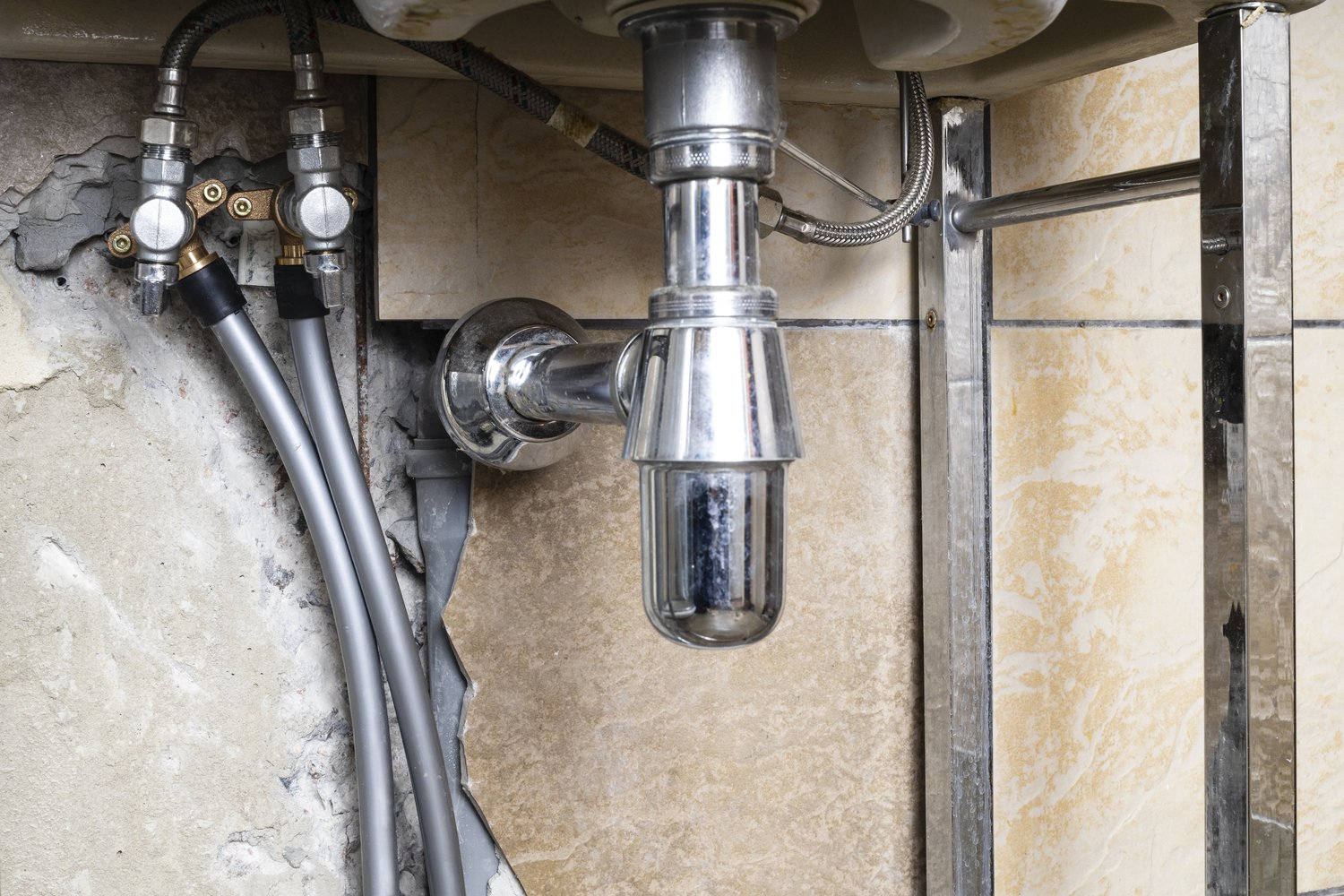Sink drain alignment problems can turn a functional kitchen into a source of frustration. Whether you’re dealing with slow drainage or water pooling under the sink, understanding the intricacies of offset and pitch issues can save you time and money. This article dives into the common problems associated with sink drain misalignments and provides practical solutions to resolve them.
- Understanding Sink Drain Alignment: Learn how improper alignment can cause plumbing headaches and discover the symptoms to watch out for.
- Identifying Offset Issues: Recognize the impact of offset drains on water flow and how to catch these problems before they escalate.
- Correcting Pitch Problems: Explore effective measures to ensure your sink drain has the right slope to facilitate optimal drainage.
- DIY Solutions: Equip yourself with practical methods and tools to tackle common alignment issues without calling in the pros.
- When to Seek Professional Help: Know when it’s time to bring in a certified plumber to handle complex or persistent problems.
By delving into these key areas, this article equips you with the knowledge needed to maintain a well-functioning plumbing system, ensuring your kitchen remains a place of efficiency and ease. For those moments when DIY isn’t enough, you’ll also learn when professional expertise is the best option to safeguard your plumbing’s longevity.
Understanding Sink Drain Alignment Problems: Fixing Offset and Pitch Issues
Sink drain alignment is a crucial aspect of maintaining an efficient plumbing system. Improper alignment can lead to various plumbing issues, impacting the overall functionality of your sink. Common problems include offset and pitch alignment issues, which can disrupt the seamless flow of water and cause inconvenience.
The fundamental principle of sink drain alignment lies in ensuring that all components are in sync to allow water to flow towards the main drainage system smoothly. When alignment issues arise, such as offsets and improper pitch, they can manifest as slow drainage, frequent clogs, or even leaks.
Offset issues occur when the sink drain is misaligned with the plumbing beneath, often leading to problematic connections that disrupt water flow. Meanwhile, pitch problems refer to the incorrect slope of the drain pipes, which can obstruct gravity-assisted drainage. Understanding these two predominant issues will enable you to identify and address alignment problems efficiently, ensuring your plumbing system remains functional and reliable.
Identifying Offset Issues in Sink Drains
Offset issues in sink drains are a common concern that can severely impact water flow and efficiency. These occur when there is a mismatch between the sink drain and the connecting pipes, usually due to poor installation or shifting structures over time.
The primary cause of offset sink drains is misalignment between the drainpipe and the waste trap. As a result, water might not flow efficiently, leading to backups or stagnant water that can emit unpleasant odors. This misalignment can also exacerbate wear and tear on pipe joints, leading to potential leaks.
To identify offset issues early, inspect the under-sink plumbing for visible gaps or misalignments between the connections. Look for signs of water pooling or slow drainage, which often accompany these issues. Detecting these problems early on can help prevent more severe complications and ensure the longevity of your plumbing system.
Correcting Pitch Problems in Sink Drains Effectively
Addressing the pitch of your sink drain is vital for maintaining efficient water drainage. Improper pitch, or slope, can cause water to pool in pipes, leading to clogs and slow drainage. Understanding the significance of correct slope is the first step in solving this common plumbing problem.
For optimal water flow, pipes should generally slope at a rate of 1/4 inch per foot. This precise pitch ensures water moves smoothly along the drain path, mitigating the risk of buildup and backups. When the slope is too steep or too shallow, it disrupts natural water movement, affecting your plumbing system’s overall efficiency.
To correct pitch problems, first identify the current slope. Using a level and measuring tape, carefully check the gradient along the drain pipe’s length. If adjustments are needed, consider realigning the pipe. Loosen pipe fittings and meticulously reposition them to achieve the desired angle, ensuring stability and alignment.
Regularly inspect your installation for shifts that may occur over time due to factors like foundation settling or inadvertent adjustments during other plumbing work. Proactively addressing pitch issues will significantly enhance your sink’s drainage performance, preventing potential headaches and costly repairs down the line.
DIY Solutions for Fixing Sink Drain Alignment Problems
Tackling sink drain alignment problems doesn’t always require a professional. You can address various common issues with some basic tools and a bit of know-how. Incorporating practical, do-it-yourself methods can be both cost-effective and rewarding.
Begin by gathering essential tools such as adjustable wrenches, pipe cutters, and plumbing tape. Also, have PVC pipes and connectors on hand, which are crucial for adjustment tasks. If dealing with leaks, ensure sealants or plumber’s putty is part of your toolkit.
To align sink drains effectively, start by disconnecting the trap. Check for any visible misalignment between the sink and drainpipe. Adjust as needed by repositioning the pipes, ensuring they align both vertically and horizontally. Cut and connect any replacement sections using the right fittings to achieve a snug fit.
If minor leaks persist after alignment, carefully apply plumbing tape or sealant around joints to create a watertight barrier. This additional step helps secure connections and prevents future leakage.
Taking the initiative to fix these problems yourself not only saves money but also enhances your understanding of home plumbing systems. Remember, patience and precision are key to successful DIY repairs.
When to Call a Professional Plumber
Understanding when to call a professional plumber is crucial for the health of your plumbing system. While many sink drain alignment problems can be addressed using do-it-yourself methods, certain issues may require the expertise of a certified plumber to ensure a comprehensive solution.
One significant indicator that it’s time to call in a professional is persistent drain clogs. If you’ve attempted several DIY fixes for a blocked drain without long-term success, there could be an underlying issue that only a trained plumber can identify. They possess the tools and expertise needed to accurately diagnose deep-seated problems in your drainage system.
Another scenario necessitating a professional plumber is when you face repeated leaks under the sink. Leaks can be more complicated than they appear and can lead to severe water damage if not addressed promptly. A qualified plumber can assess the cause of the leak and implement a lasting repair, preventing further issues down the line.
Moreover, if you encounter a misalignment that results in unusual noises, like gurgling sounds, or if the sink drains too slowly despite being clear of debris, these can be signs of incorrect pitch or offset in the plumbing layout. Such structural problems often require professional realignment to restore optimal water flow and prevent future complications.
The benefits of hiring a certified plumber include not only their expertise in resolving complex issues but also the peace of mind that comes from knowing the problem is handled efficiently. Professionals are familiar with the latest plumbing technologies and techniques, ensuring any repairs or installations meet current standards and regulations.
In conclusion, while tackling minor plumbing issues can be quite empowering, acknowledging the limits of DIY solutions is essential. Recognizing when a problem is beyond your skill set protects your home from potential damage and costly repairs. When in doubt, don’t hesitate to contact a professional plumber who can safeguard the longevity and functionality of your plumbing system.
Frequently Asked Questions on Sink Drain Alignment
What causes offset sink drain issues?
Offset issues in sink drains typically occur due to misalignment during installation or shifts over time from structural changes.
How can I identify pitch problems in my sink drain?
Pitch problems are identified by slow drainage or standing water in the sink. Check the slope of the drainpipes to ensure proper pitch.
What slope is recommended for sink drain pipes?
A 1/4 inch per foot slope is generally recommended for sink drain pipes to ensure effective drainage.
Can I fix sink drain alignment issues myself?
Yes, many alignment issues can be resolved with DIY methods using basic tools such as an adjustable wrench and plumber’s tape.
When should I call a professional plumber for sink alignment problems?
Call a professional if you encounter complex issues, such as persistent leaks or major structural repairs, to ensure proper resolution.





